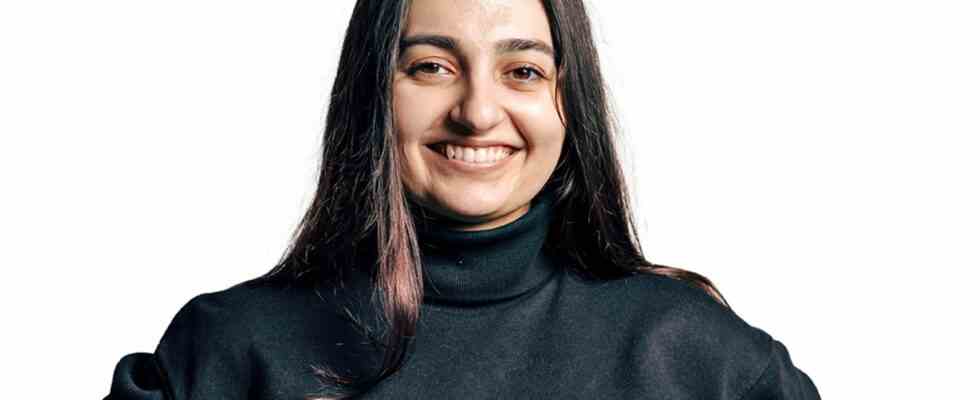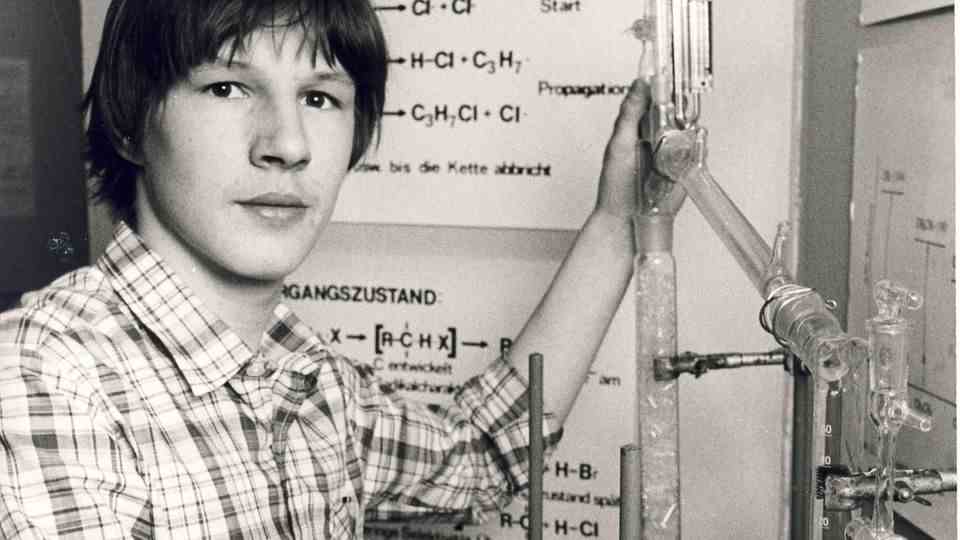New Column
Brilliant ideas
From dyslexic to gifted: Aruna Sherma developed a non-toxic contrast agent at the age of 16
In her free time, Aruna Sherma read introductory books on chemistry and physics
© Max Arenas
Winners of Jugend forscht and the German Founders’ Prize tell their stories. This time: Aruna Sherma, 20, took second place in the national physics finals of youth research with a non-toxic contrast agent.
Recorded by Doris Schneyink
My grades in elementary school were miserable. I had great difficulty distinguishing the letters and sounds. My teachers thought the problem was that my parents are from India and we almost only speak Hindi at home. I was dyslexic, which was only diagnosed very late – as is the case with many children with a migration background. I was not recommended to go to a high school and received remedial instruction at the district school. I have often felt quite stupid and discouraged. Back then, many people didn’t even think I was capable of completing secondary school. I finally learned the alphabet in dyslexia therapy, and in middle school I realized that I really enjoy reading.
By chance I came across contrast media and their danger…
Actually, I was interested in everything. Philosophy, chemistry, physics, math, botany. In my room I have built devices to make certain extracts from the nightshade family. A teacher said I could go to the Hamburg State Library. I did that and read introductory books on chemistry and physics in the afternoons.
Of course you noticed that in my class tests, suddenly I got an A in all subjects, only in German I got a B and sports – well. I got into a scholarship for gifted students. And the teachers sent me to the student research center.
When they asked me there what I wanted to do, I said something with magnetism. I had read up on magnetic resonance imaging and the physical phenomena on which this procedure is based. An MRI machine takes high-resolution images of the inside of the body. By chance I came across an article about contrast media. These are given to patients so that the images will be better. But they contain a toxic metal: gadolinium. It can be deposited in the central nervous system. Therefore it should be given in the lowest dose.
… I wanted to solve the problem …
My first thought was: Why not solve the problem and use a different metal? But that is not that easy. I’ve been looking for alternatives for a long time and eventually found an approach in nanophysics. Nanoparticles are incredibly tiny. But they can develop superparamagnetic properties, even surpassing gadolinium. That’s when I knew, okay, I need my own nanoparticles. I was firmly convinced of my idea.
Through contacts with a professor, I was finally allowed to produce my own particles in the nanoparticle laboratory at the University of Hamburg. It’s a bit like cooking, except the process is extremely delicate. If something is wrong with temperature or oxygen content or one of the many other parameters, the size of the particles will fluctuate. It is also very difficult to stabilize them.
I’ve been working on it for months. When I then saw my nanoparticles under a special spectroscope for the first time, it was an overwhelming feeling of happiness. Now I just had to find out whether my contrast agent was compatible. I needed a toxicity test done on living cells.
… and did it with success!
I then wrote to a lot of universities and laboratories, but only got rejections. Finally, two scientists from the University Hospital Hamburg-Eppendorf agreed. When they saw me, a 16-year-old student, they laughed. They thought I was a student writing her master’s thesis.
But they were super nice and said they couldn’t let me into the lab, but they would test the drug on embryonic cells for me. In return I should bake them a cake. Of course I did. It was a marble cake.
The results were good – my remedy is non-toxic. I would like to do more tests. But in the meantime I’ve started studying physics in Hamburg and I don’t have much time. The Jugend forscht award was very important to me because it allowed me to get to know people who understood me. That was always my biggest problem: convincing others that I’m really going to do it now.



